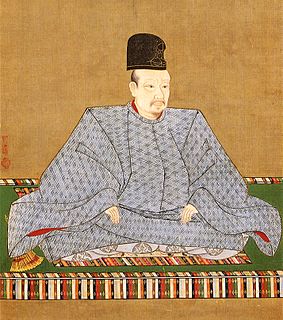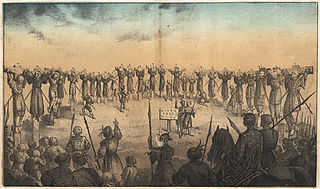 W
WBunroku (文禄) was a Japanese era name after Tenshō and before Keichō. This period spanned the years from December 1592 to October 1596. The reigning emperor was Go-Yōzei-tennō (後陽成天皇).
 W
WEmperor Go-Yōzei was the 107th Emperor of Japan, according to the traditional order of succession. Go-Yōzei's reign spanned the years 1586 through to his abdication in 1611, corresponding to the transition between the Azuchi–Momoyama period and the Edo period.
 W
WThe Japanese invasions of Korea of 1592–1598 or Imjin War involved two separate yet linked invasions: an initial invasion in 1592, a brief truce in 1596, and a second invasion in 1597. The conflict ended in 1598 with the withdrawal of the Japanese forces from the Korean Peninsula after a military stalemate in Korea's southern coastal provinces. It ultimately resulted in Joseon Korean and Ming Chinese victory and the expulsion of Japan from the peninsula.
 W
WKeichō (慶長) was a Japanese era name after Bunroku and before Genna. This period spanned from October 1596 to July 1615. The reigning emperors were Go-Yōzei-tennō (後陽成天皇) and Go-Mizunoo-tennō (後水尾天皇).
 W
WOn October 19, 1596, the Spanish ship San Felipe was shipwrecked in Urado on the Japanese island of Shikoku en route from Manila to Acapulco. The local daimyō Chōsokabe Motochika seized the cargo of the richly laden Manila galleon, and the incident escalated to Toyotomi Hideyoshi, ruling taikō of Japan. The pilot of the ship incautiously suggested to Japanese authorities that it was Spanish modus operandi to have missionaries infiltrate a country before an eventual military conquest, as had been done in the Americas and the Philippines. This led to the crucifixion of 26 Christians in Nagasaki, the first lethal persecution of Christians by the state in Japan. The executed were later known as the Twenty-Six Martyrs of Japan.
 W
WThe Pine Trees screen is a pair of six-panel folding screens by the Japanese artist Hasegawa Tōhaku. The precise date for the screens is not known, but they were clearly made in the late 16th century, in the Momoyama period, around 1595. The screens are held by the Tokyo National Museum, and were designated as a National Treasure of Japan in 1952.
 W
WTenshō (天正) was a Japanese era name after Genki and before Bunroku. This period spanned the years from July 1573 through December 1592. The reigning emperors were Ōgimachi-tennō (正親町天皇) and Go-Yōzei-tennō (後陽成天皇).